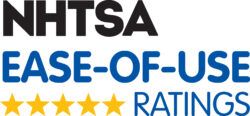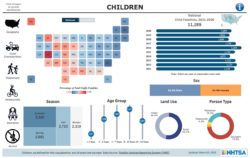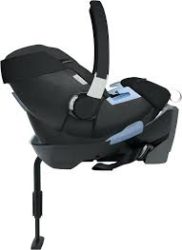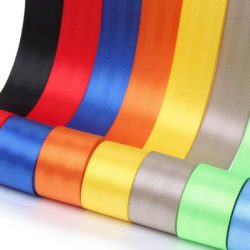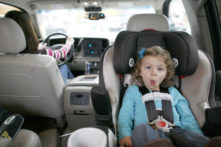Dorel now requires all of its CRs to touch the seatback ahead when used rear facing, as stated in the company’s current owner’s manuals. A recently published study (Maltese, M., et al.) describes the research that helped inform the company’s decision for this change (see SRN Sept/Oct 2024).
Read More from “Seatback Touching Considerations—Not Exclusive to Dorel CRs”Topic: Crash Testing and CPS Studies
Study Looks at Gap Distances Between RF CRs and Front Seats in Frontal Crashes
In September, the journal Traffic Injury Prevention published an article by Maltese, et al., titled “An evaluation of front seat distance from rear facing child restraint systems in prevention of injury in frontal crashes.” As the title suggests, it is the long-awaited paper that provides the scientific backing for Dorel’s summer 2023 announcement requiring its CRs used rear facing to gently touch the vehicle seat ahead whenever possible.
Read More from “Study Looks at Gap Distances Between RF CRs and Front Seats in Frontal Crashes”Study Examines NHTSA’s CR Ease-of-Use Ratings
Besides regulating vehicles and CRs through Federal Motor Vehicle Safety Standards, NHTSA also influences roadway safety through its various ratings programs, which can be found here.
Read More from “Study Examines NHTSA’s CR Ease-of-Use Ratings”Data to Drive the CPS Field
Nowadays, it’s a given that data drives professional decision-making. So, it’s essential for those working in the CPS field to be aware of and have access to reliable data sources. Important activities, including budgeting, program planning, fundraising, research, and advocacy, all benefit from using relevant data.
Read More from “Data to Drive the CPS Field”Q & A: New Side-Impact Rule, FMVSS 213a
On August 1, NHTSA amended FMVSS 213 to require CRs to meet a dynamic side-impact test. This final rule, added as FMVSS 213a, fulfills a mandate from Congress and is much like NHTSA’s 2014 Notice of Proposed Rulemaking on this topic. Below are the answers to some basic questions CPSTs may have about this new rule.
Read More from “Q & A: New Side-Impact Rule, FMVSS 213a”AAP Issues a Revision of CPS Policy Statement
Slight changes continue most aspects of familiar CR selection guidelines, but no longer specifies RF goal of age 2
In August, the American Academy of Pediatrics (AAP) issued a revised version of its policy statement titled “Child Passenger Safety.” The changes primarily affect the wording of recommendations for how long a child should ride rear facing. While the former version, issued in 2011, indicated that a child should stay rear facing until at least age 2 or older, the revised policy simply recommends that children stay rear facing as long as possible, until the height or weight limit of their RF CR is met (without making age 2 the rear-facing goal).
Read More from “AAP Issues a Revision of CPS Policy Statement”
Ask an Engineer: How Do Load Legs Improve CR Performance?
This guest article continues SRN’s “Ask an Engineer” series with Dave Sander, CPST-I and engineer (formerly with Evenflo). This series gives an insider view of how CR engineers develop and design CRs, as well as new insights into CR functionality.
Load legs (aka stability legs, foot props) are not a new invention. They’ve been a common feature of CRs for many years in other parts of the world, especially Europe. But in the U.S., load legs continue to be a bit of a novelty and are found only on a handful of (mostly high-end) RF-only CRs. The feature employs an adjustable metal bar that extends vertically from the CR base to the floor of a vehicle to help manage crash force (see photo, left).
Read More from “Ask an Engineer: How Do Load Legs Improve CR Performance?”
Ask an Engineer: Can CRs Be Made in a Variety of Colors?
Sure! You can have any color car seat you want, as long as it’s black!
This guest article continues SRN’s “Ask an Engineer” series with Dave Sander, CPST-I and engineer (formerly with Evenflo). This series gives an insider view of how CR engineers develop and design CRs, as well as new insights into CR functionality.
Boosters in bright colors have been on the market for a while, but have you ever wondered why CRs with harnesses don’t come in a variety of colors? I’m talking about the plastic shells, not the pads. As you might have noticed, that plastic is nearly always black, white, or a shade of gray, sort of like what Henry Ford famously said about his Model Ts, paraphrased above. And there’s a reason for that!
Read More from “Ask an Engineer: Can CRs Be Made in a Variety of Colors?”
Ask an Engineer: Are Differences Among Webbing Types Important?
The following guest article was inspired by an enlightening conversation between SRN editor Denise Donaldson and Dave Sander, CPST-I and engineer (formerly with Evenflo, but employed elsewhere at the time this article was written).
Have you ever given close attention to the webbing used for car seat harnesses, LATCH straps, or vehicle seat belts? If so, you may have noticed that some are wider or feel thicker, smoother, or rougher than others. You may have also noticed that some have stripes (actually called panels), and that those panels vary in appearance and number.
Read More from “Ask an Engineer: Are Differences Among Webbing Types Important?”
Updated Study on RF vs. FF Effectiveness
Published: SRN November/December, 2017. Updates will be posted here as they become available.
Update: August 31, 2018. The American Academy of Pediatrics (AAP) has revised their policy on child passenger safety.
As anticipated, the journal Injury Prevention in November published a new study by University of Virginia and other researchers titled “Rear-facing versus forward-facing child restraints: an updated assessment.” This reexamination of field data was spurred by recent concerns about the accuracy of an earlier study by Henary, et al. (See SRN’s July/August and Sept/Oct 2017 issues.) That 2007 study strongly favored the safety benefits of riding rear facing (and supported subsequent policy updates by the AAP and NHTSA). The new study could not confirm the earlier study’s findings, nor did it result in new, statistically significant outcomes.
Read More from “Updated Study on RF vs. FF Effectiveness”

